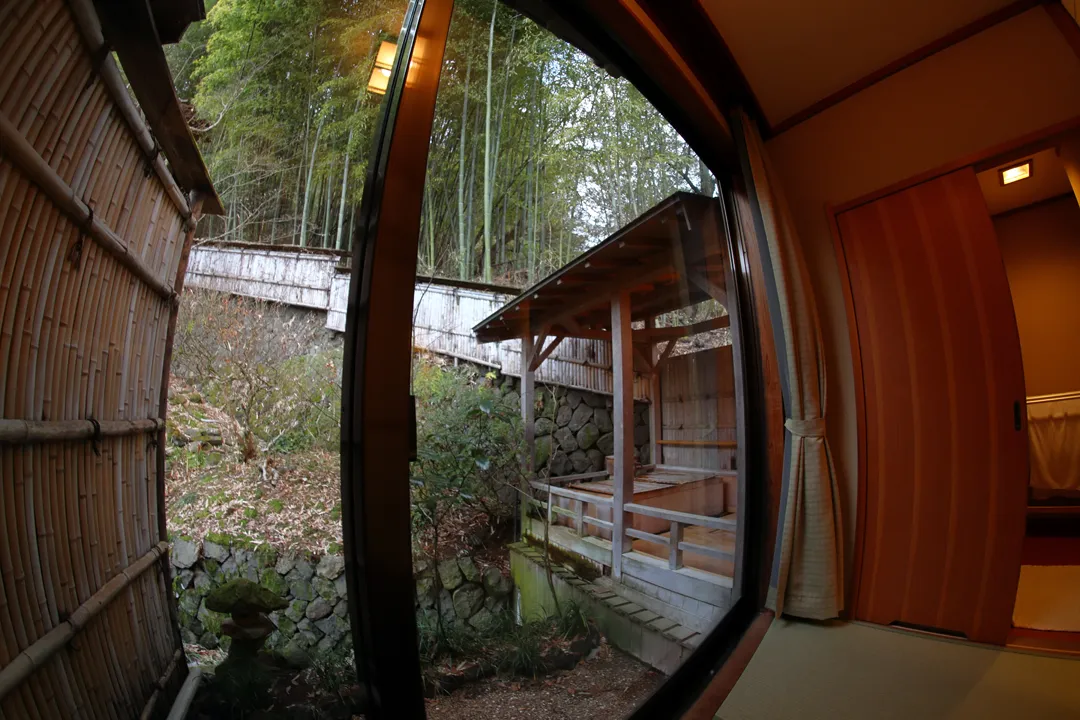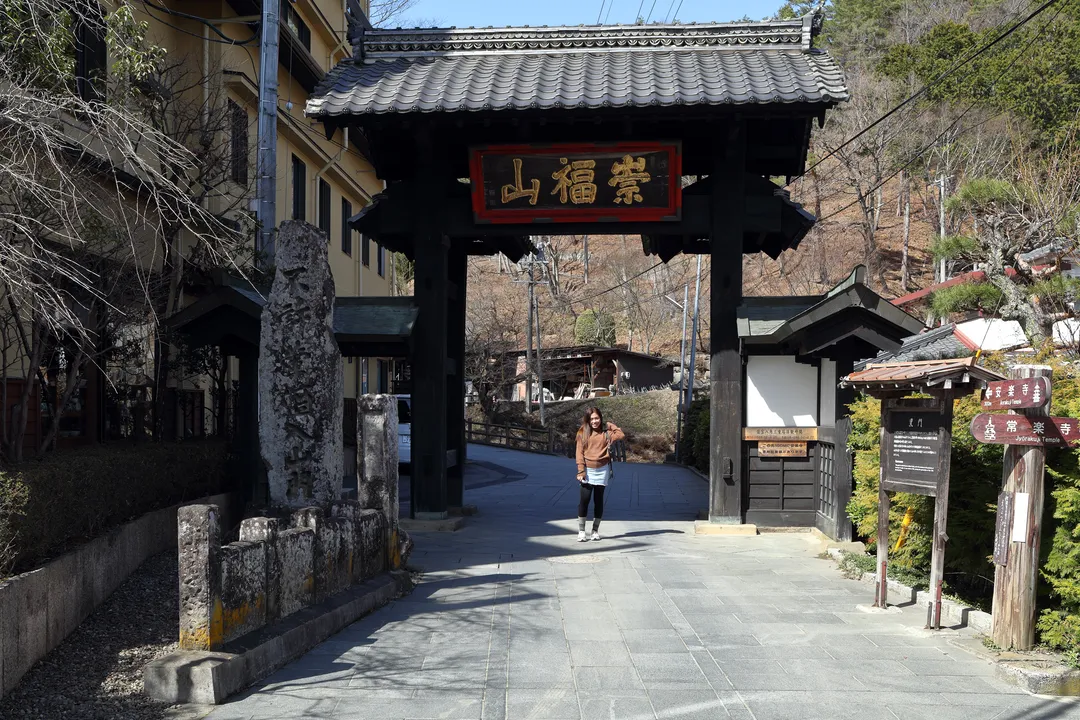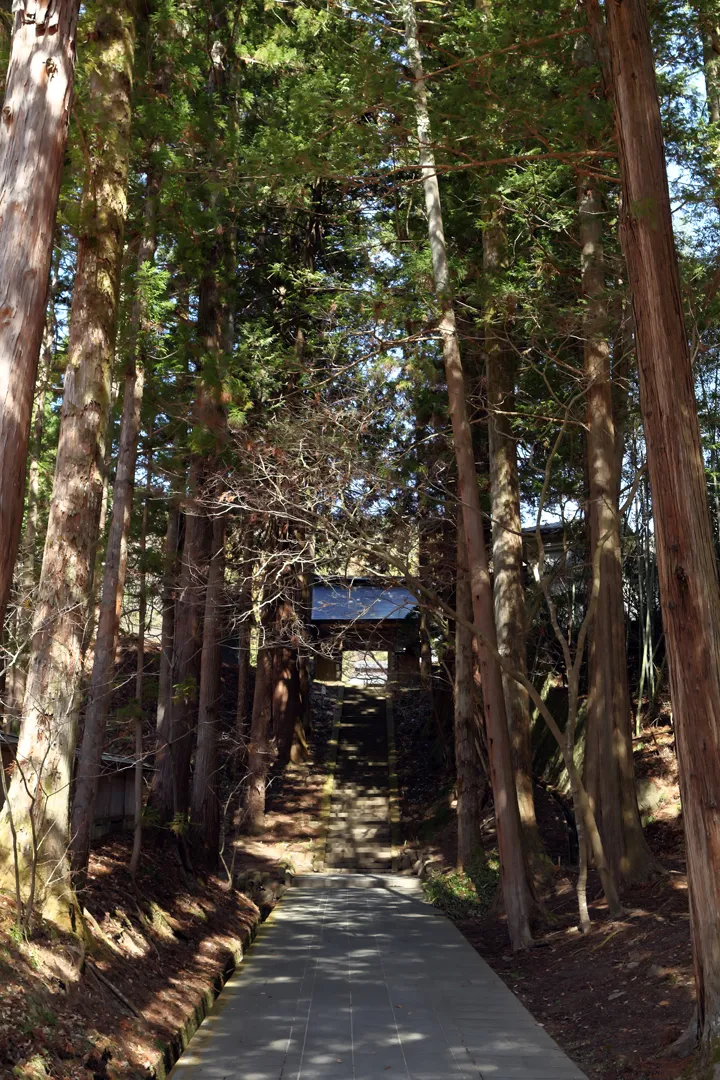Bathing in the waters of a hot spring is a classic Japanese leisure activity, especially in the cold winter months. Having traversed eight prefectures of Japan in the same number of days, we certainly could benefit from such a chance to slow down and recharge. Among the numerous hot spring towns that exist along the way back to Tokyo, our choice was the small but relatively accessible Bessho Onsen in the outskirts of Ueda City, Nagano Prefecture. At Ueda Station, almost exactly halfway between Tokyo and Toyama on the Hokuriku Shinkansen line, we transferred to the local Ueda Electric Railway, a quaint 11.6 km line where only one or two trains run per hour.

The trains there consist of just two cars converted from old Tokyo commuter trains, which is a typical configuration seen in rural areas throughout Japan. From Ueda, it takes half an hour to travel to Bessho Onsen, the other terminus of the line, where the nostalgic appearance of the station building has been preserved.

We then had to walk uphill for ten minutes from the station to our hotel, but the route is straightforward, the weather was excellent, and there were hardly any cars in the street.

The dozen or so hotels in the town are all clustered around one central intersection. We had chosen Kashiwaya Honten because it is the only one offering rooms with private hot springs; I had used a shared one before in Ishikawa but Ritz absolutely did not want to. This had the significant drawback of costing 56,000 yen, but it was fine to try once and at least included dinner and breakfast.

Kashiwaya Honten has been in business for more than 130 years, but it remains small with just 15 rooms, with most of them having different layouts. Actually, we were not even sure which room we booked because the listing in Agoda had very little information about the room types. We ended up in the “Yumemitsuki Room”, the word yumemitsuki (夢見月) being a traditional name for the month of March, coincidentally the current month at the time.

We showered and then used the outdoor hot spring for a while. The rooms are staggered in such a way that each bathing area has a good view of the forest outside but no visibility into other rooms.

It is inadvisable to stay in a hot spring for too long due to the risk of dehydration, so we went out again to walk around the town before dinner. It was extremely quiet, even more so than Hida-Furukawa.

A few steps east of the hotel area is the Kitamuki Kannon temple. Its name literally means “facing north” in reference to its highly unusual orientation — south is considered the most auspicious direction for Japanese temples to face.

Additionally, Bessho Onsen is also home to the Anraku-ji and Jōraku-ji temples. The unique octagonal pagoda at the former is designated a national treasure. This concentration of cultural heritage led the town to be nicknamed “Kamakura of Shinshu”.

However, the original Kamakura is a much larger and busier tourist destination in the Tokyo metropolitan area with an urban atmosphere, while in Bessho Onsen, there is virtually no traffic and the loudest sound comes from the rapidly flowing river in the middle of the town.

At a small park overlooking the water, we saw a sign claiming that Bessho Onsen is the oldest hot spring in Japan, although this is impossible to prove because there are no written records of when it was first used.

From another viewpoint near the start of the path to the Anraku-ji, we could see all the way down to the central part of Ueda. Further beyond the city, clouds drifted lazily past the peak of Mt. Asama. This is probably the ideal place in the area to watch the sun rise, but without the assistance of jet lag, it was completely unrealistic for us to wake up and go out that early.

Since the Anraku-ji was already closed for the day, we went back to the hotel for dinner. It was served in a private dining room on the other side of the building, and the staff kindly gave us a paper with the descriptions of every course in English.

A wide variety of dishes were served, and everything was good, but no course was particularly outstanding compared to the others.




Curiously, the chef was apparently qualified to prepare pufferfish, which can be extremely poisonous if handled improperly, but it was not included in our dinner and there did not seem to be a way to order it.

While we were away eating, housekeeping reconfigured our room for sleeping by removing the table and placing bedding on the floor. This traditional Japanese arrangement is less comfortable than a bed, and somewhat questionable considering the price point, but it was functional enough. Anyway, the sleep was not the main reason why we stayed there.

The following morning, we had a choice of breakfasts but we of course chose the Japanese option over the western one. We ate in the same dining room but with the window open, providing a view of the Kitamuki Kannon.

The setup was pretty elaborate for a breakfast, on a level above the typical buffets found in modern hotels. Although the individual dishes appeared small, there were many of them, so it was a filling meal overall.

Before we had to check out at noon, we still had time to go back out to visit the Anraku-ji, since it is only a five-minute walk away. The entrance is in fact right next to the hotel cluster, almost hidden behind a large building.

Built on a forested hillside, the temple is visually isolated from the town below by towering evergreen trees. The atmosphere is thus one of being surrounded by nature.

In the highest part of the Anraku-ji is the national treasure octagonal pagoda. Dating from the 13th century, the 18.75 m tall structure is the last surviving example of its kind, having escaped the natural disasters and wars that destroyed the others. It is not possible to go inside, only to admire the exterior woodwork from below.

Aside from this, there is not much else to see in the temple, so we headed back to our room to pack our belongings and bathe in the hot spring one last time. When it was finally time to check out, we were able to get a ride to the station in the hotel’s van, giving us enough time to buy tickets and catch the train to Ueda, then from there onwards to Tokyo.

